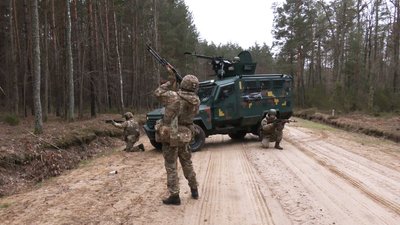Russia’s troop deployment to Belarus, echoing 2022 buildup before all-out war, is planned for September 2025

The Belarus Defense Ministry has announced that Russia and Belarus will conduct Zapad-2025 joint strategic military exercises from 12 to 16 September.
These maneuvers raise concerns due to the possible use of Belarus as a staging ground for aggression against Ukraine and the Baltic countries.
Repeating the 2022 invasion preparation scenario
According to Valery Revenko, Head of the Department of International Military Cooperation at the Belarusian Ministry of Defense, the theme of the exercises is “the deployment of troop groups to ensure the security of the Union State.”
“The overall goal is to test the capabilities of the Republic of Belarus and the Russian Federation in ensuring the military security of the Union State and readiness to repel possible aggression,” Revenko emphasizes.
Experts have previously noted that the Zapad-2025 scenario essentially repeats the preparatory measures under the cover of which Russia amassed troops near Ukraine’s borders in late 2021 – early 2022, Radio Free Europe/Radio Liberty reports.
Russia is already deploying troops and equipment to Belarus
According to the Armed Forces of Ukraine, Russia has begun transferring the first units to Belarus — several hundred soldiers and dozens of pieces of equipment, as per Facty.
Minsk assures that the exercises pose no threat to neighbors and will be conducted openly. Observers from nine NATO countries are involved.
NATO will respond harshly to possible aggression
NATO Secretary General Mark Rutte stressed that a new military conflict in Europe is currently unlikely but cannot be ruled out.
If anyone decides that an attack on Poland or any of our allies will go unpunished, they will face the full force of the alliance, Rutte warned.
Read also
-
Hackers attack Russia’s largest state airline, disrupting dozens of flights. They sign off “Glory to Ukraine! Long live Belarus!”
-
Lithuanian military recovers mysterious drone 100km from Belarus border after five-day search
-
July records 96 Russian drones flying from Ukraine into Belarus, Belsat says